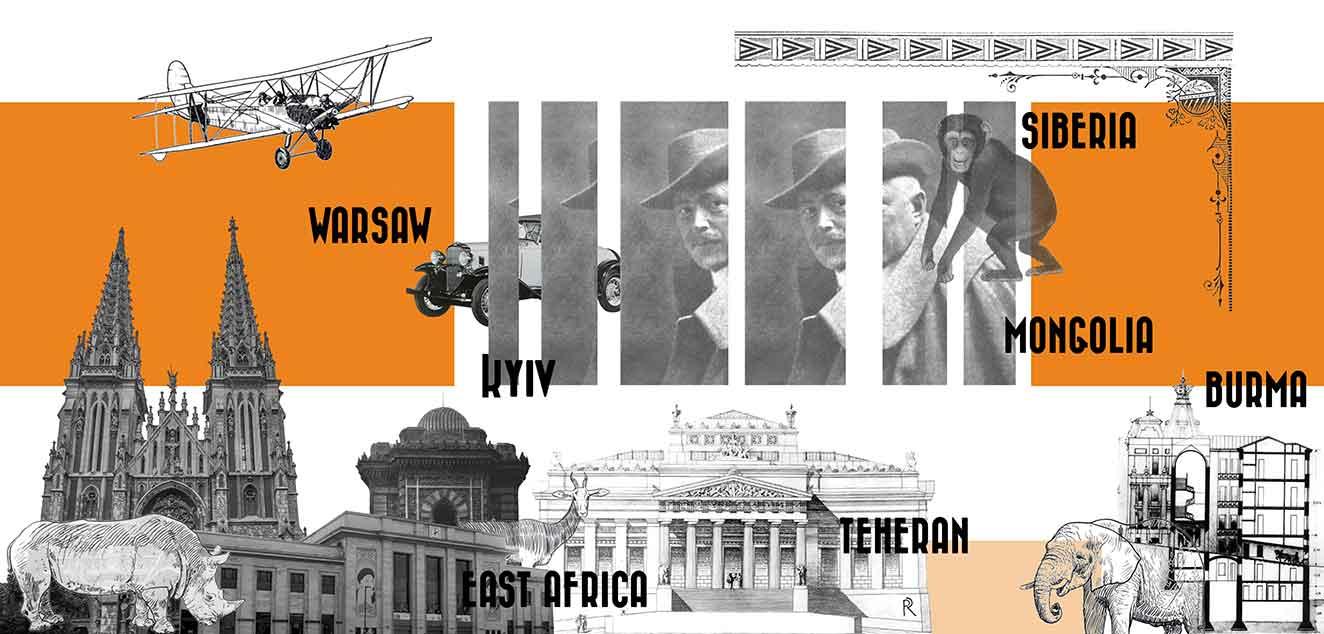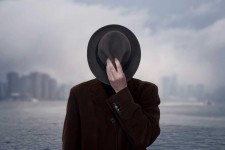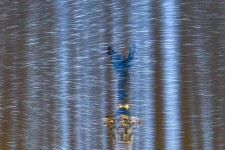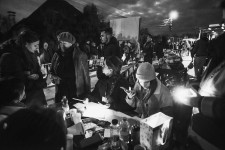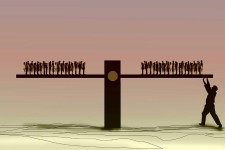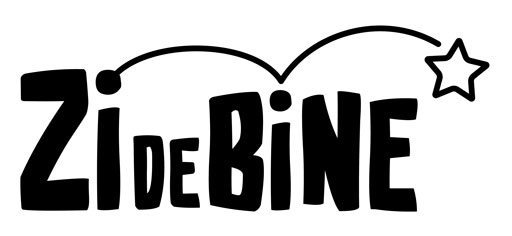Just two days after Russia's invasion of Ukraine, on February 26th 2022, Volodymyr Zelensky posted a video on Twitter that moved the world, announcing that he had not left Kyiv and denying rumours that he ordered the army to surrender. Filming in the centre of Kyiv, the president did not choose his headquarters, the Presidential Administration building, as his backdrop, but turned the camera to the building opposite, known as the Chimera House.
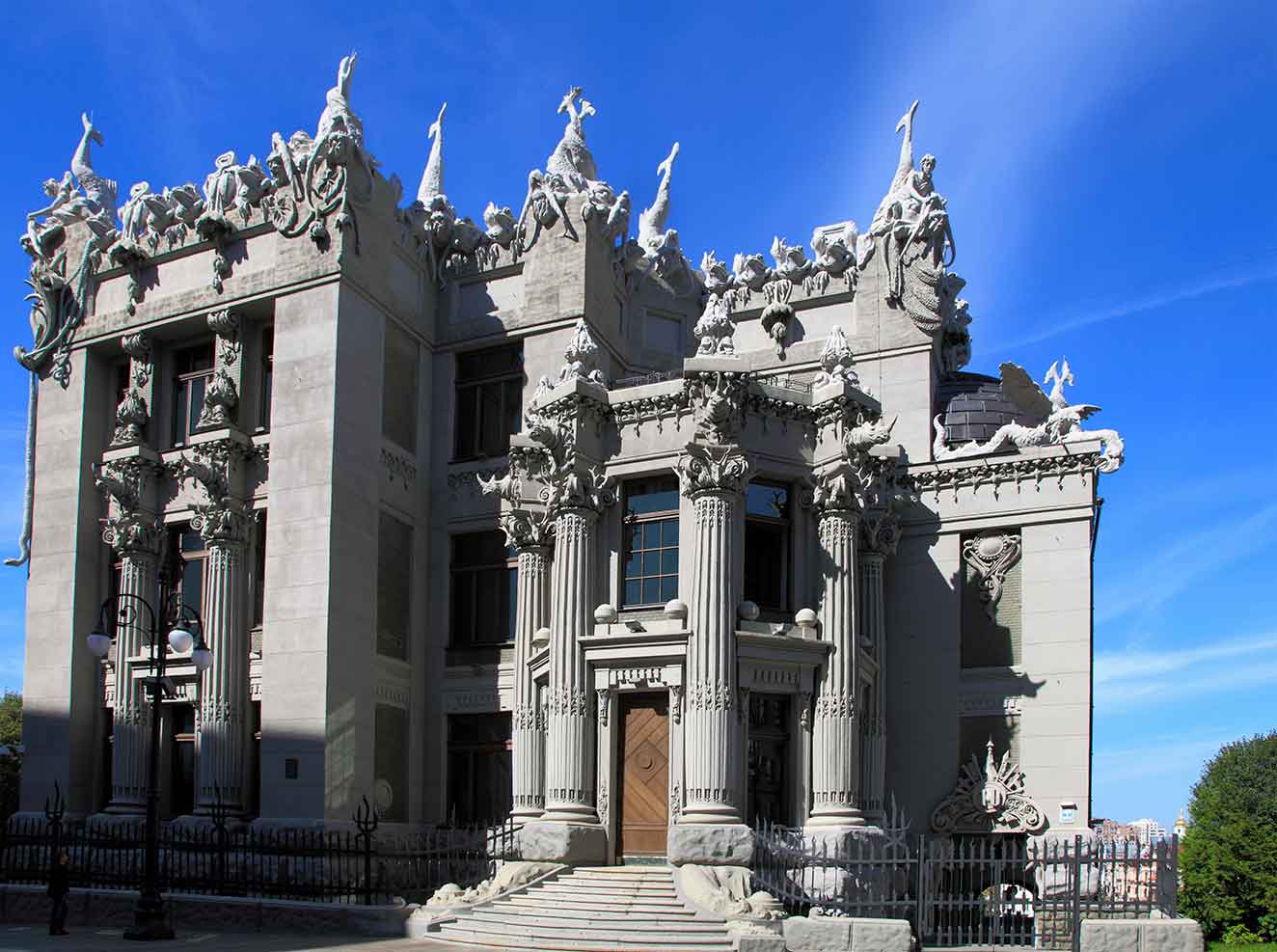
So what makes this house so bizarre and why did Zelensky choose it as the backdrop for his important message? The choice was by no means accidental, the House of Chimeras is a truly unique work of architecture, an emblem for Kyiv. Furthermore, it is part of the national patrimony and therefore part of the cultural identity of a country in danger of destruction. The background simply reinforced the message of the President.
Self-portrait building
In fact, because of its history, the Chimera House is not just a heritage site, but a veritable symbol of the city. A testament to a booming period in the early 20th century when Kyiv became much of what it is today. The Kyiv that made possible such bold and unusual buildings..
Its unconventionality comes mainly from its particular ornaments, striking and intriguing at first glance, the very reason for its name. A whole menagerie gaze at passers-by from the facades and the roof. Its position is also unusual: located right in the centre of Kyiv, the building is set into a steep slope and, to adapt to the topography of the site, its main façade has three storeys while the rear has six, with such a great disparity in terms of height between the opposite sides.
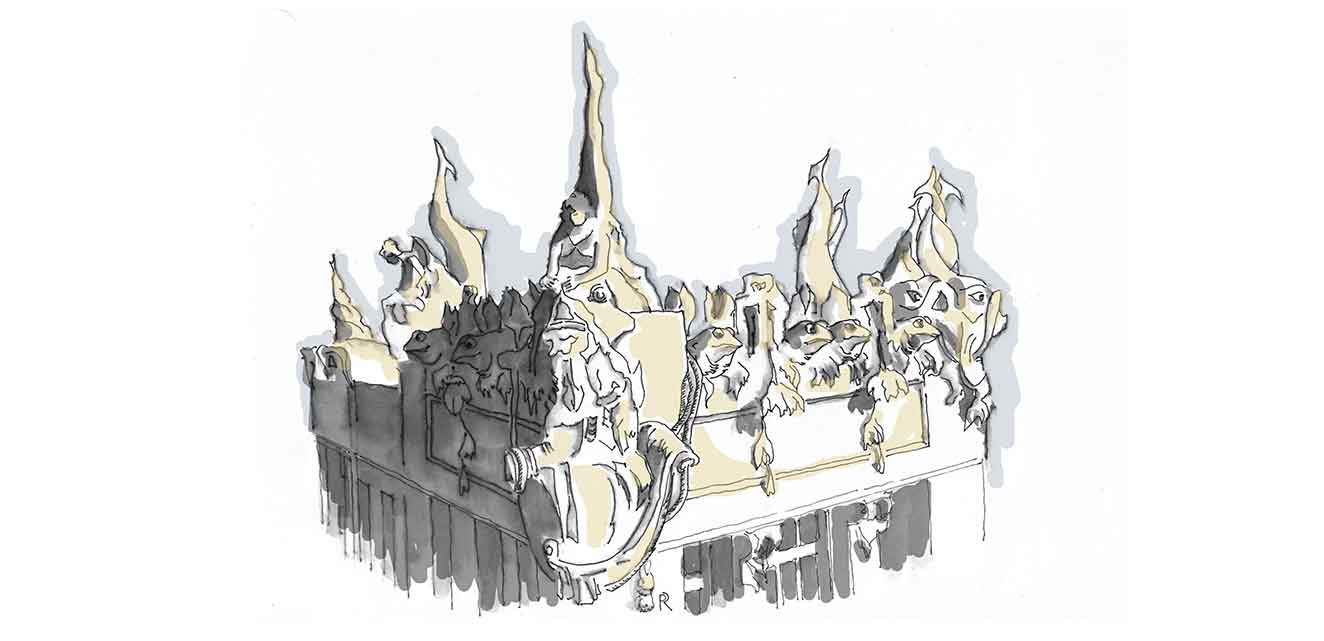
Just as interesting are the stories behind the construction, that only reinforce the first impression you get from looking at the building. These stories feature an exceptional architect, Vladislav Gorodetsky, who was also the original client, a reason why the building is also called Gorodetsky House. In fact, the Chimera House could also be considered as a self-portrait of the architect, as it embodies the whole extraordinary character of its author, a remarkable avant-garde figure..
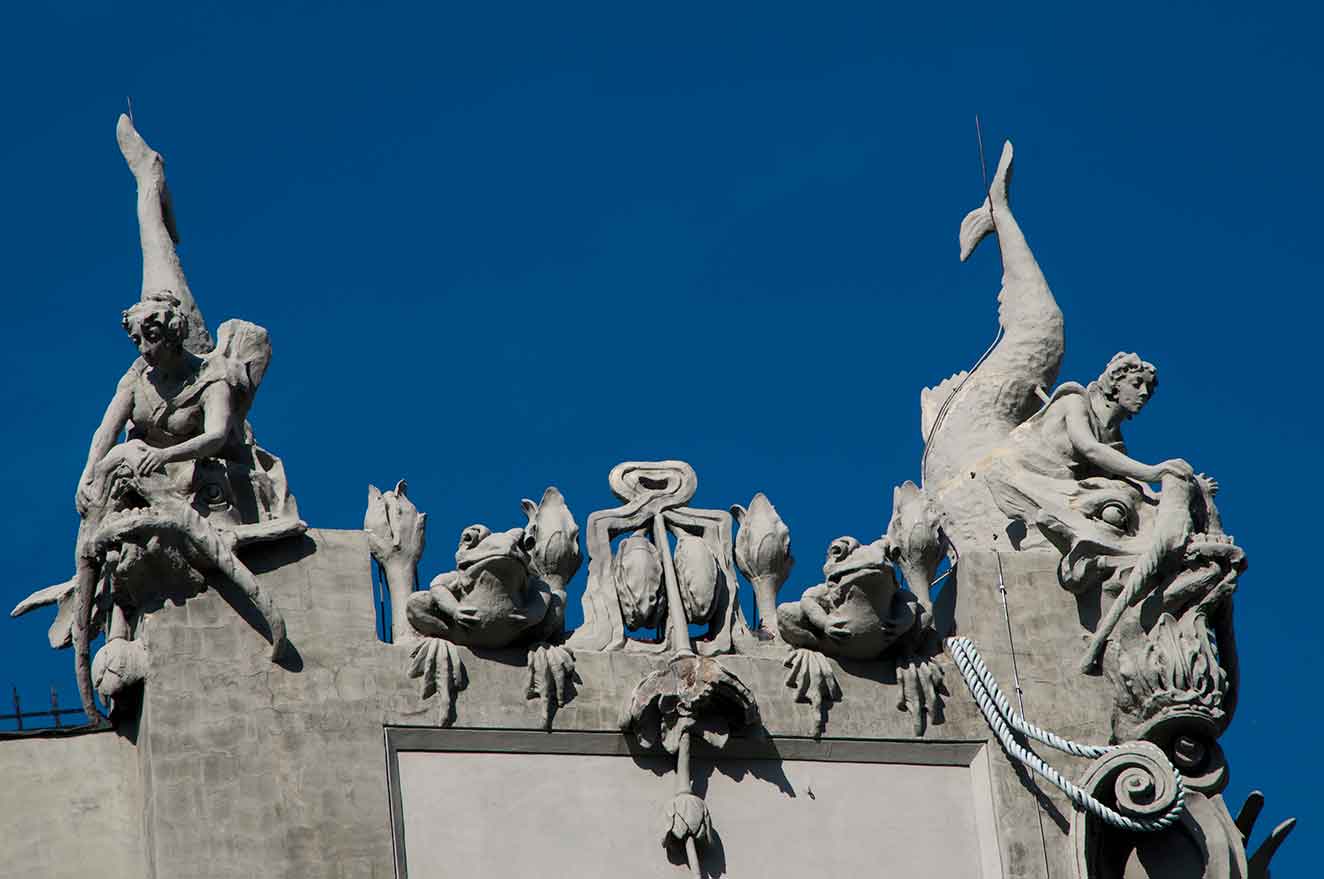
Fair hunting
Vladislav Gorodetsky, although Polish by birth (Władysław Horodecki in Polish), is considered to be an Ukrainian architect or simply a Kyivan architect, being both adopted and made famous by the city. Overall, ethnicity was less important when it came to the professionals of that period, what mattered most was the place where they practiced their profession and the context providing them the opportunity to gain recognition. And early 20th-century Kyiv was certainly such a place.
Gorodetsky was, in fact, an universal man. Born in Poland (1863), he passed away in Iran (1930), and travelled a great deal all over Europe, Asia and Africa, driven by two burning drives: his profession (architecture) and his passion (hunting).
He was member of the "Imperial Society for Fair Hunting", an organisation promoting rules-based hunting. Somewhat surprisingly, he was a nature lover and on his expeditions he gathered valuable information for biologists and anthropologists, documented both photographically and in sketches in a book published after his return: In the Jungle of Africa. Hunter's Journal. An excellent marksman, he won numerous gold medals in competitions and had a very good knowledge of veterinary medicine, specifically hunting dogs.
A talented illustrator and painter, he created theater sets and costumes. Was also an excellent fashion designer, creating shoes, hats, elegant dresses and precious jewelry. An eccentric who, reportedly, sometimes walked the Corso with a monkey on his shoulder.
An extremely prolific man, he had an open mind and a great sense of perspective, in tune with the great transformations of the early 20th century. Passionate about technology, Gorodetsky had one of the first cars in Kyiv, and not just any car, but a convertible limousine. He was also actively invested in aviation research, adding the experience of flying to his life experience.
Primary profession
But, regardless of his various passions, Gorodetsky was first and foremost an architect. Apart from his hobbies, his real calling was to design prominent Kyiv landmarks: St. Nicholas Roman Catholic Cathedral, Karaite Synagogue and the building of the current National Art Museum. He also designed a number of other famous buildings in cities around the world.
Early in his career, for fame and recognition, he did it all: designing tombs, working on the city's sewage project, designing pro bono a pavilion for the Imperial Society for Fair Hunting, production halls for factories or the two pavilions of the 1897 Agricultural and Industrial Exhibition.
Gorodetsky contributed to the planning of the city in the building spree of the early 20th century, when Kyiv was radically remodelled and many new buildings were being constructed. In doing so, his contribution became an important part of the city's brand. Today, one of the streets he helped planning bears his name, and a statue has been commissioned in the centre of Kyiv, featuring him seated at a table, with a hunting book in front of him, inviting people to join him for a cup of coffee. Moreover, Gorodetsky also became a character in a detective novel, with Oles Ilchenko's City of Chimeras, declared Ukraine's best book in 2010.
Bolsheviks are comming
Most of the available background on Gorodetsky is controversial, contributing to the aura of mystery surrounding this enigmatic character. In the communist period, however, he is no longer mentioned at all.
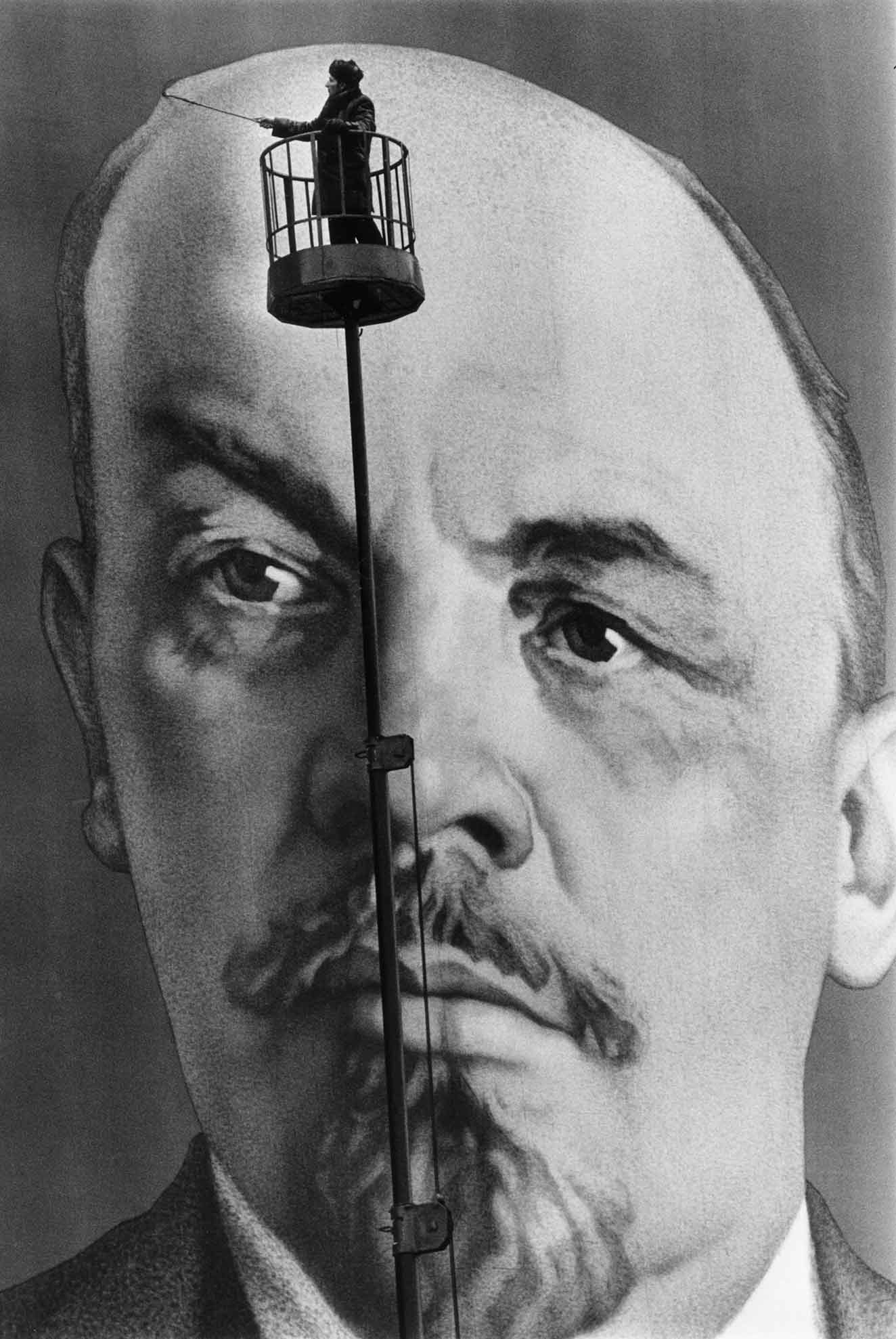
As previously mentioned, he made long hunting trips to Siberia, Mongolia, Burma, Tibet, the Caucasus and several British colonies in Africa. In 1920, he fled the Bolsheviks to Warsaw, where he worked for an American company. In 1928, the company made him a tempting offer: chief architect at the "Persian Railway Construction Syndicate", in Iran. He builds Tehran's Central Station, then is invited to coordinate several other projects. Dies of a heart attack at the age of 67, shortly after a hunting expedition near the Caspian Sea and is buried in Tehran's Catholic cemetery. His simple gravestone hosts a simple epitaph, in Polish: "May this foreign soil be gentle on him".
Style and concrete
This is the story of the man who imagined the Chimera House, a grand work, a house-manifesto, a bet, literally, defying both old and new canons, and catching everyone's eye, a hunting castle in the centre of Kyiv..
The simple fact that this building was built on a site that, although ultra-central, had been bypassed by everyone because of its configuration - an extremely steep slope near a relatively small swampy area - made it famous even before it was built. The configuration of the land and the fact that building had reportedly been forbidden there for a long time allowed Gorodetsky to buy it for a very good price and to carry out an extremely bold project. It was a challenge that gave him complete freedom to demonstrate the technical and artistic skills that made him famous. A seemingly impossible task, Gorodetsky pioneered the use of concrete, an innovative solution for civil construction at the time. In a city that was adding spectacular new buildings at a breathtaking pace, it was hard to keep on dazzling. Gorodetsky found a way, thanks to his vivid imagination.
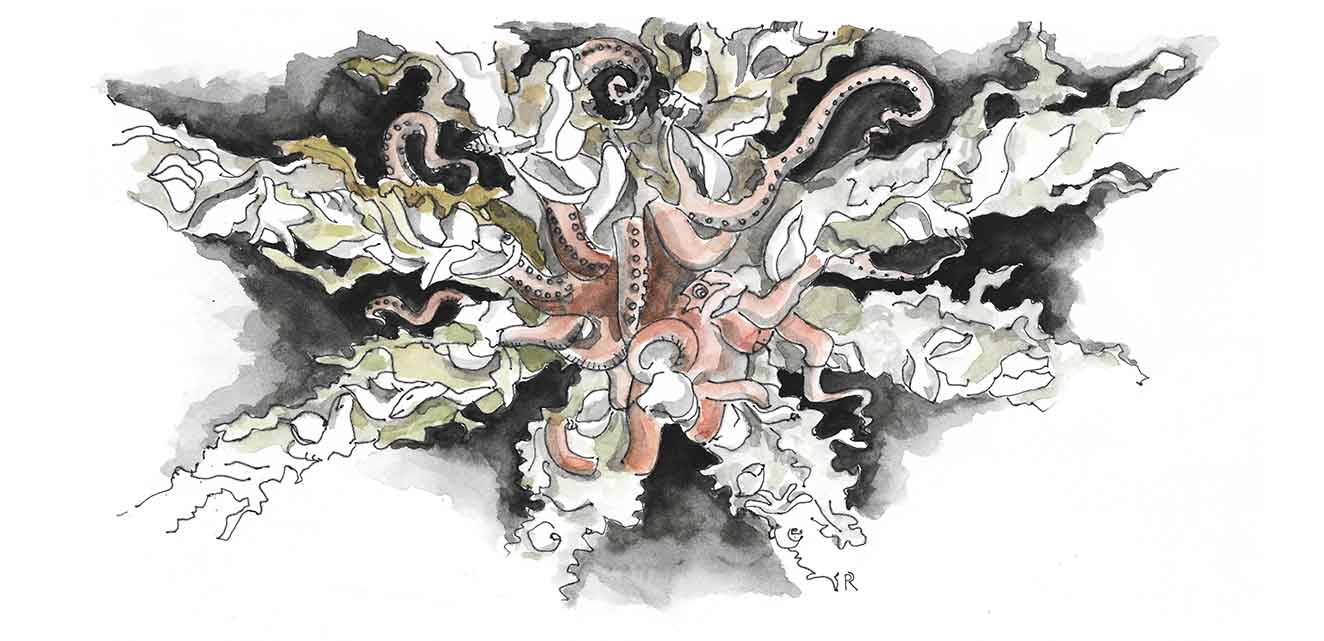
The exterior ornaments, featuring living animals and nymphs, and the interior one, consisting of hunting trophies, floral elements and frescoes depicting hunting themes, create a fairy-tale architectural landscape that charms or terrifies, but certainly does not leave you indifferent.
Style-wise, the building was classified as Art Nouveau, and Gorodetsky has been dubbed the "Gaudi of Kyiv", but it is, nevertheless, one of a kind and hard to fit into any architectural line.
The building also stands out for its meticulously designed functionality. Each floor was designed as a stand-alone apartment, featuring all the essential rooms, from living rooms to kitchens, toilets, to servants' quarters and even small boudoirs. In addition to ice-refrigerated cabinets for storing food and elaborately decorated stoves, the ground floor of the rear - the six-storey part of the building - also hosted a stable for horses and one for cows, making it possible to provide fresh milk for the children.
And there's still more information to be revealed. For example, the short time the building was completed: the land was bought in early February 1901, construction began in March, and the first apartments were already inhabited in 1903, including Gorodetsky's own apartment on the ground floor on the three-storey side, facing the famous Bankova Street.
For the building structure, he was joined by engineer Anton Strauss, and Milanese sculptor Elio Sala, with whom he had already worked on other emblematic buildings in Kyiv, including the Roman Catholic Cathedral of St. Nicholas, contributed the stone and cement ornaments.
The unusual nature of the house and the mystery surrounding its architect inevitably spawned many legends over the years. One of them is that Gorodetsky built the house in memory of one of his daughters, who committed suicide out of love, by throwing herself into the waters of the Dnieper river.
New tenants
In 1912, Gorodetsky lost possession of the building, unable to repay the loan he obtained for buying the land and building the house. His financial collapse was mainly fuelled by his expensive hunting safaris in Africa.
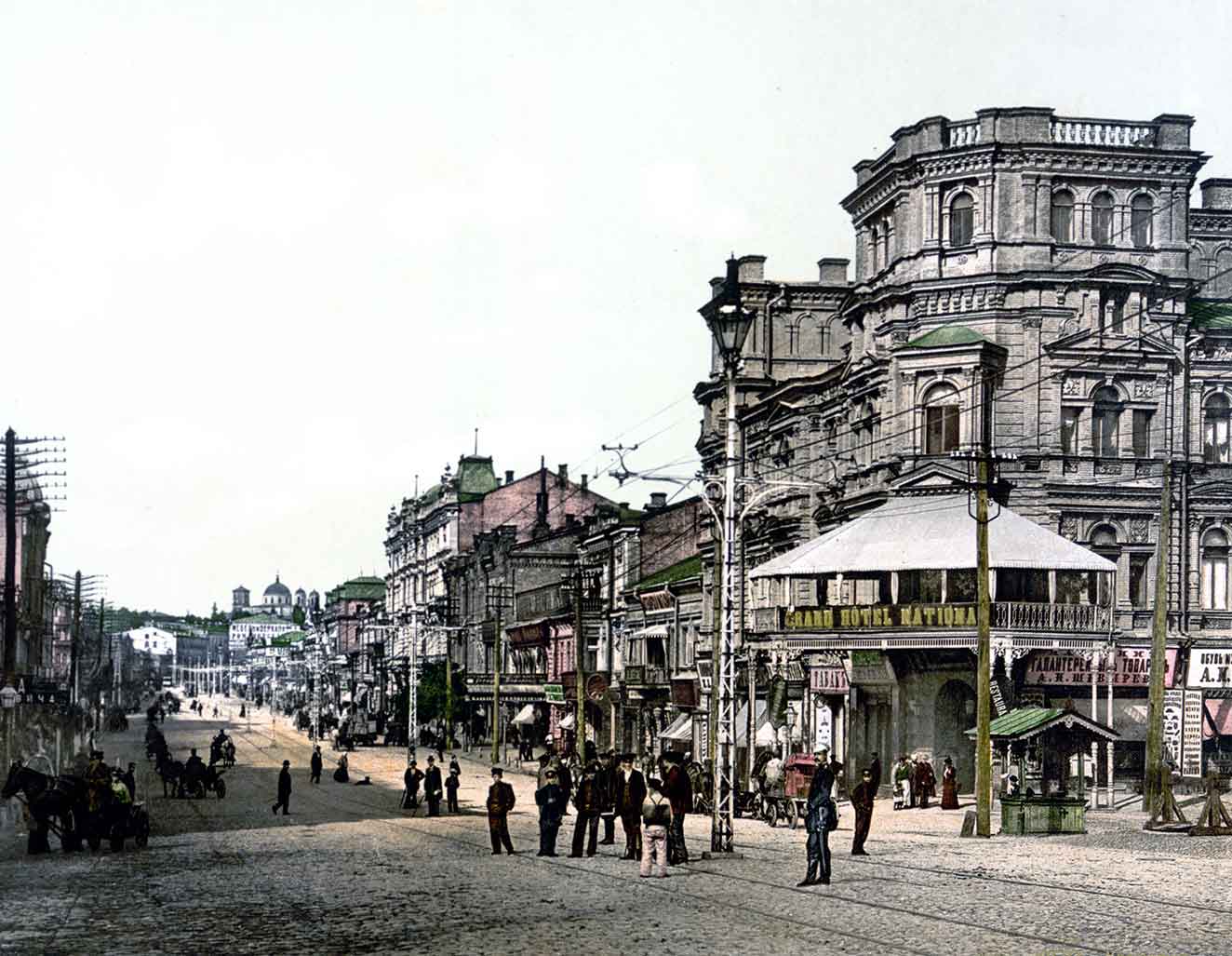
Chimera House had several owners over the years. Once the Bolsheviks came to power and turned it into the headquarters of various military departments, then it was nationalised and turned into a residential building, with up to ten families living on each floor.
During the Second World War, the building was abandoned and then became a clinic for the Communist Party elite. Over the years, the Chimera House gradually eroded and was even in danger of partial collapse. Fortunately, it was carefully restored in the early 2000s and since 2005, after briefly functioning as a branch of the National Art Museum, it is the presidential residence for diplomatic ceremonies.
The rehabilitation also included the outdoor garden area, also designed according to Gorodetsky's plans, and a square connecting it to the Presidential Administration Building. Reading Gorodetsky's story, the nonconformism and boldness conveyed by the building and its architect simply complement President Zelensky's message in the historic video filmed here on the evening of February 26th 2022.








